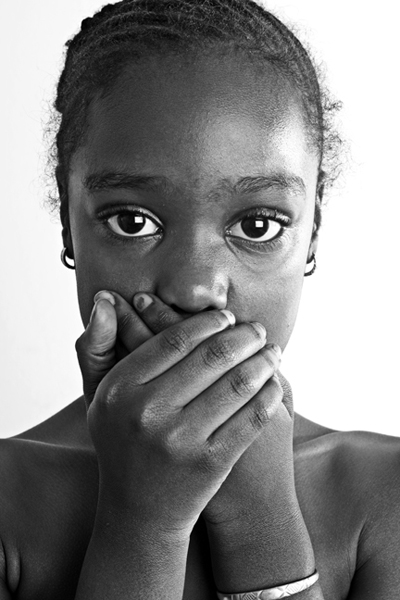Serendip is an independent site partnering with faculty at multiple colleges and universities around the world. Happy exploring!
Notes Towards Day 3 (Tues, Sept. 11): Writing Silence


I. Welcome back!
apologies for my confusion re:
ending time on Thursday (speak up!)
II. call us back together w/ the most re-used image among your posts, jsalas's "speak no evil" (and question re: using your screen names, as offering a measure of privacy; cf. Sabbot's paper: "every post we write is a practice in self-silencing, or censorship...there will always be a trace"; NB re Google's analytics--using your first initial and last name will not cover your tracks; try something very different like cantelope or Rhapsodica or...?)
III. Peter Elbow gave us a list of analogies between silence and freewriting:
- Both are quiet.
- Both encourage you to communicate with yourself.
- Both involve relinquishing control, letting go; thus sometimes fear.
- Both tend to start with jabber, jabber, jabber, noise, static, baloney. Yet both often lead to--or at least clear space for--voice, nonbaloney, and langauge and thinking that are grounded in actual experience....
- In silent sitting and freewriting, there is often a feeling of fellowship or companionship in a "gathered" separateness.
- Both silence and freewriting are hard to classify in terms of "input" vs. "output." Both are times of "producing" but also "waiting for things to arrive."
- Both give relief from logic and linearity.
- Both consist of one part of the self ministering to another part of the self.
IV. So (obviously!) today our beginning "silence" will be the activity of silent freewriting. Write down "silence is..." and then let's see where we go...when you find yourself falling "silent" on the page, just write "silence is, silence is, silence is..." until something else arises. You will not share what you have written; you don't have to "produce" anything, but just be quiet, listen to your thoughts, record them....We will do this for 10 minutes.
V. what was that like....?
VI. Now I want us to do another, much more directed, form of "writing silence."
Peter Elbow (also) says, "the collage form is important here. The force of the collage is the force of embedded silence: asterisks, gaps. Parts don't 'flow' in the logical order" demanded by 'good writing.' The collage is jagged and broken rather than smooth. What a relief. Parataxis rather than hypotaxis: nonconnection, nonsubordination. And the collage doesn't say what it's saying. It's just a bundle of fragments....power [is] generated by disruptive discontinuity and disorder....By using unconnected fragments and putting them in the "wrong" order, the collage sucks the reader in. The reader has to make the connections. Whenever there is silence, the reader must enter in, read in, participate..the reader of silence is implicated int he text in a new way...for she...must join with the writer to understand and decipher the silences...."
[the "silencing" of Latinate words: Elbow's, in using them? yours, in not looking up the meanings?
parataxis--from Greek for 'act of placing side by side'; writing technique of using simple sentences using coordinating conjunctions
hypotaxis--from Greek for 'act of placing beneath'; writing technique that highlights inequality/hierarchy in parts of the sentence, w/ subordination ("after," "because," "if"....) or premodification
I think poetry--all that silence!--all those spaces on the page!--works the same way (the fear of all that white space keeps many of us from reading/enjoying poetry). For example, ED's poems,
esp. #407:
It is the Ultimate of Talk -
The Impotence to Tell -
& 1681:
The perfectest communication
Is heard of none -
VII. so here's the second writing exercise:
re-writing your essay on being silent/silenced into an ED-like poem:
re-read, slowly, what you wrote, then re-write the lines that have some heft...
don't worry about connections (think Elbow's "collage")...
just listen for (and re-record) some words with weight, some phrases with presence
we will take 15 minutes for this, and we will read these aloud.....
what was it like? what got left out as the silence came in? what came in?
this exercise resembles what I had you do, last week,
describing your visualizations of silence in three words (1 noun, 1 verb, 1 adjective...
trying to surround our descriptions of silence WITH silence....)
story also of the student who substituted a haiku for her final paper in my Gender and Science class;
and invitation to append your "poem" or "collage" as a comment to your paper,
a "crystalization" of what you were saying in prose
VIII. How was it, doing that, "writing silence" on-line this weekend?
What's to celebrate, lament, question about that process?
What was clarified, what complexified, in doing so?
What difference did it make, having to start w/ an image?
Did anyone resist the "re-appropriation" of her own image?
(how did it feel to have your image picked up/not get picked up?)
Did anyone learn anything new about her own image, re-read by another?
What else did you notice, when you read your classmates' essays, re-viewed their images?
(I will get to commenting on them this weekend...wanted to do "sustained silent reading" first,
while you reflected on them...so often the teacher's comments silence further reflection....)
I noticed that jhunter's image also got picked up and re-used several times...
I took note of
jsalas's quote: "only speak when you can improve on the silence"
Sharaii and others about the choice of self-silencing
sdane re: well-choreographed dance of group discussion --
and the "unselfish" gift of being silent to allow others to speak
Danielle on the contrary action, not actively seeking out others' voices: "This might be a radical notion of silencing, but I have certainly experienced it and it felt as if I was being silenced -- like I was a shelved book, obviously full of personal insights, suggestions, questions, and comments, but not opened or investigated."
IX. For Thursday, read Jane Tompkins' "Talking in Class" and my "Silence is so Windowful"
(you can annotate them on your computer w/ AdobeReaderX) and we'll go on talking
about (not) talking in class...
the Tompkins pdf actually has two chapters (and you are welcome to read the second one, on "Higher Education," which is set @ BMC (you'll also read a third one w/ Jody in November); but it's really just the first very short piece on "Talking in Class" that you need to read for our discussion on Thursday...


